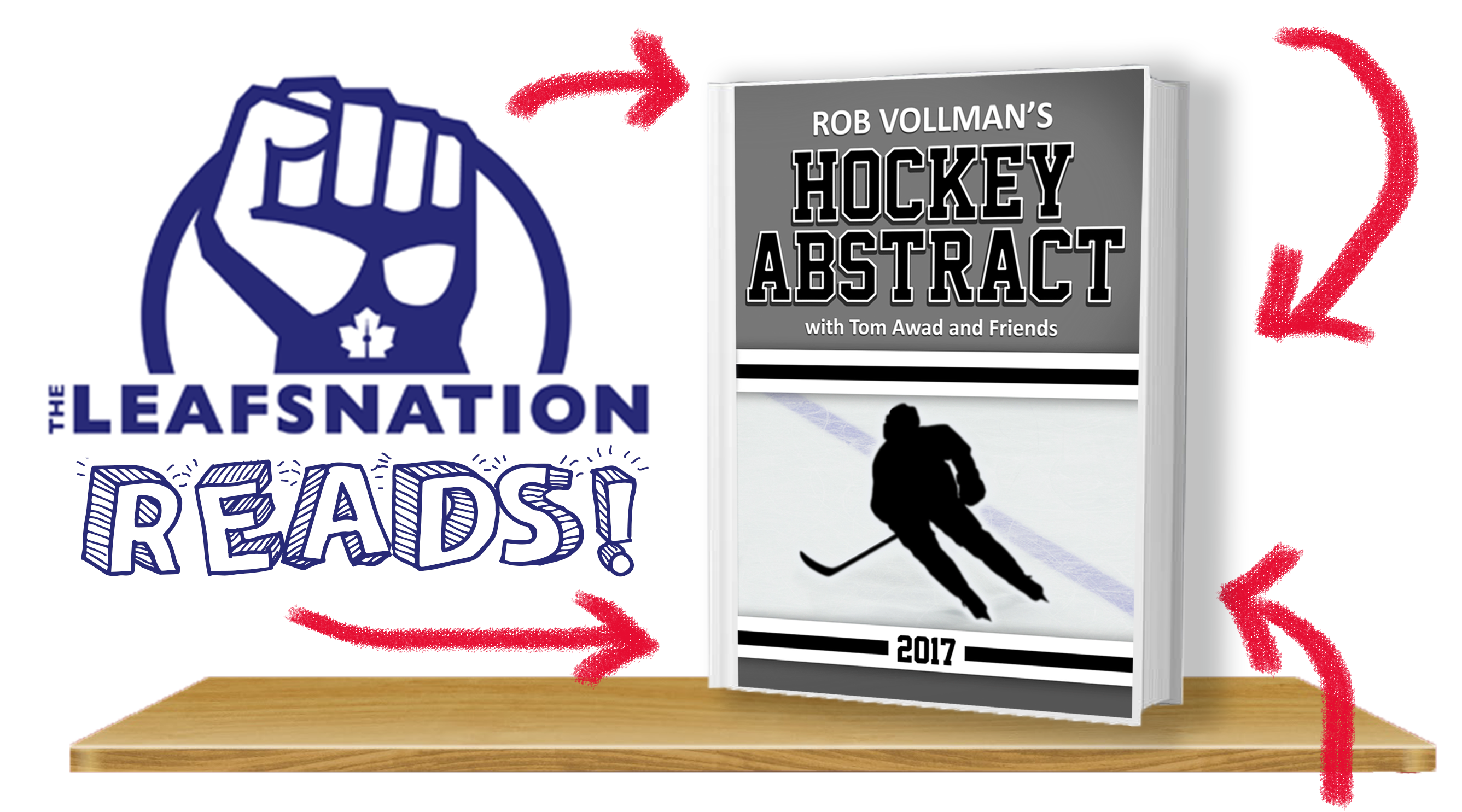TLN Reviews: Hockey Abstract 2017

By Megan Kim
6 years agoBefore we begin, in the interest of full disclosure: The Leafs Nation was asked to read Hockey Abstract 2017 and write a review. I received a free PDF copy for the purpose of reviewing the text. While I’m moderately familiar with Rob Vollman’s works and internet presence and respect him immensely, I don’t know him personally.
Now that that’s done with, let’s get to the book.
General
Chances are, if you’re a hockey fan on the internet who has at least a nominal interest in statistics, if you’ve come across Rob Vollman’s work. (If you haven’t, I strongly recommend you check his stuff out. Especially check out Stat Shot, which is a really nice overall guide to Hockey Analytics™ and is an informative read. Also, it’s both interesting and fun for the average, grabbed-off-the-street hockey fan, which is not always something you can say about stat-heavy works.)
If you have read any of Vollman’s work before, especially any of the previous editions of Hockey Abstract, you’ll find this year’s installment pretty similar. As with just about everything Vollman produces, Hockey Abstract 2017 excels at making complex ideas digestible for all hockey fans. Sometimes it’s intimidating to dive into a book that’s based largely on mathematical concepts, but that’s not the case here.
The overall tone of the book is casual, and reads conversationally rather than like a textbook. You’re taking in a considerable amount of information, but it’s very manageable.
Structure
Each chapter begins by presenting a question (i.e. Who are the best goaltenders in the NHL, and who are the goaltenders most likely to have a breakout season? How do players’ junior results correlate to success in the NHL? What makes a power play #ActuallyGood?) and the rest of the chapter is devoted to answering said question through various methods of statistical analysis.
It’s a formula that has worked well before and still does, often taking the reader step-by-step by briefly explaining some of the math behind a table of rankings, then presenting said rankings. (Layout note — it’s not ideal that many of the tables are broken up across two pages, but I definitely acknowledge the limitations of print and it’s probably better to split a table across a page break than make the text so minuscule it’s hard to read.)
The chapter that’s a little different is the one that goes through all 31(!) teams for the upcoming season, examining what shape they’re in. This isn’t a particularly in-depth look at any one team, and if you’ve spent a great deal of time analyzing a team on your own, you’ll probably find these brief team summaries lacking. However, they’re a great way to brush up on the state of the league, and a useful overview on the 2017-18 season outlook.
In fact, that’s probably the best way to look at this book as a whole. It’s a great overview on where we are with analytics as a community, but not super in-depth with any concept, which makes sense! This isn’t a detailed research report, it’s an abstract that’s meant to be accessible for casual fans.
Content
One of my favorite things about this edition was that it was a collaborative effort. With Vollman hard at work on the second edition of Stat Shot, the back half of the book is composed of chapters from some familiar names (like Matt Cane and Alan Mitchell) and some new ones, as well.
All of the guest authors did a great job maintaining the light tone of the book while delving into their respective subjects. Without giving too much away, I especially loved Matt Cane’s power play chapter, which was maybe the most in-depth section in the book. Cane’s great at breaking things down, and that was on full display here. From a personal standpoint, systems analysis pieces are some of my favorite things, so it’s no surprised that I enjoyed Cane’s chapter.
Another cool bit was a chapter on whether or not we could accurately predict injuries to any extent, from Jeremy Sylvain and Michael E. Schuckers of St. Lawrence University. It’s clear there’s a lot of potential here, because as of yet this is a pretty untapped area, so I was excited to see this piece.
Overall, if you’re someone who’s generally in tune with the hockey stats community, there aren’t a ton of new ideas, per se. However, the book does a good job of using familiar metrics and applying them to this season’s teams and players. Where else am I going to get player usage charts for all 31 teams in one place, you know?
Closing Thoughts
If you’re a human who likes keeping up with the advanced stats side of twitter, buy this book! If you’re a human who wants to dip your toe into hockey numbers, buy this book! If you’re a human who doesn’t like hockey… Why are you even reading this review?
I will say that if you are more interested in hockey stats in general as opposed to a focus on the upcoming season, go for Stat Shot instead. If you specifically want analysis for 2017-18, buy Hockey Abstract 2017. Or, you know, support good work! Buy both if you’d like; who am I to tell you what to do?
Happy reading!
Billion Dollar Lineup Contest

Submit your NFL lineup in this FREE Draft Kings by September 10th for your chance to win $100,000 for the highest scoring player. If your roster matches up perfectly in Week 1 then you could walk away with $1,000,000,000 from Draft Kings! Enter your lineup today.
Recent articles from Megan Kim





